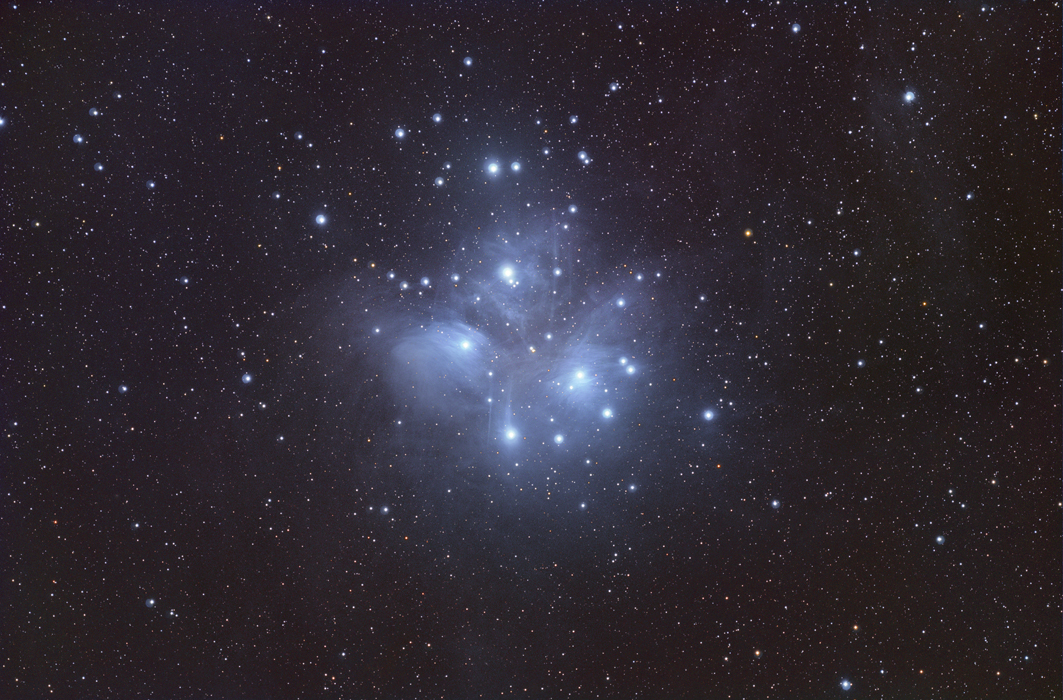The Pleiades (M45)
Characteristics:
Magnitude: 1.6
Distance: 380 light years
RA: 3h 46m 31s
Dec: 23 degrees 57' 36"
Description:
The Pleiades (M45, the "Seven Sisters")
convey a sense of stately, quiet winter beauty. This open star
cluster has been recognized since antiquity, with the oldest recorded
observation being approximately 1000 years BC. Within this
cluster, it is possible to resolve between 7-11 stars with the naked
eye, depending upon seeing conditions (and eyesight!). Through
the telescope, the cluster is known to contain about 500 stars that are
gravitationally bound to each other. The age of this cluster is
estimated to be about 65 million years old, meaning that it was "born"
around the time of the dinosaur extinction. The beauty of this
cluster is due to the impressive amount of blue nebulosity that appears
to surround many of the stars (although is most likely not physically
associated with the cluster). During visual
observation, there is a hint of nebulosity in a small scope such as an
8" SCT,
although the full extent can only be observed in longer exposure photos
such as this one.
Photographic Details:
Date: Decmber 16, 2006
Scope: FSQ-106 at f5, on the G11 Losmandy
Mount.
Autoguider: SBIG STV with
e-finder.
Camera: SBIG STL11000M, class 2 chip, -20C.
Filter: Astronomiks
R, G, B filters (unmounted).
Exposures: This is a BRGB
image. Red, 5'
x 8; Green, 5' x 4; Blue 6' x 16, all unbinned. Total exposure 156 minutes.
Conditions: Temperature 38 degrees F, average
transparency, average seeing, intermittent breeze, clouds invaded
after 11 PM.
Post-processing:
Calibrated, aligned, and sigma clip combined
in Maxim. DDP
in ImagesPlus (IP). Further processing in Photoshop CS (16
bit format). I did not have enough time to obtain a separate
luminance channel before clouds rolled in. Since the blue channel
had good signal to noise, and I used it for luminance (with a mask to
highlight only the central M45 region).
Please
note: Graphics on this website may not be reproduced without
author permission.
Back to Star
Clusters
Home
